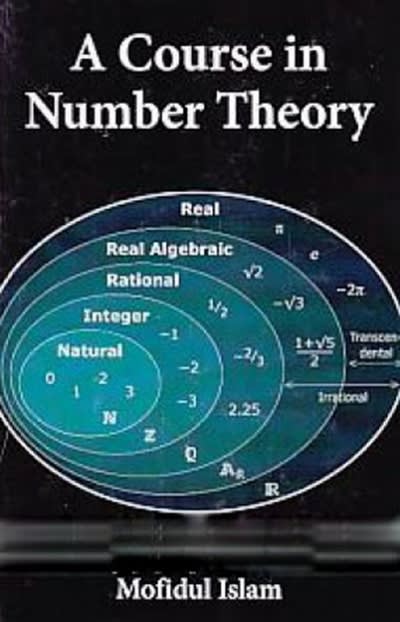Question
You will use multiple linear regression to investigate this question. The dependent variable is resale value, measure by resale price as a percentage of the
You will use multiple linear regression to investigate this question. The dependent variable is resale value, measure by resale price as a percentage of the original price. For example, a Y value of 60 means that after two years, the price of the vehicle was 60% of its original selling price. The independent variables are the original suggested resale price (SRP) in dollars and dummy variables indicating the type of vehicle.
Q1)Create dummy variables to indicate the type of vehicle: SUV = 1 for a sports utility vehicle, 0
otherwise; and FULLSIZE = 1 if the product was a full-sized pickup, 0 otherwise.
What is the reference category that does not an associated dummy variable?
Group of answer choices
a. Small Pickup
b. sport Utility
c. type of Vehicle
d .Full-Size Pickup
Q2 )Run a regression with resale as the dependent variable and suggested resale price as the
independent variable. Call this Model A. What is the adjusted R-squared of this
model?(two decimals)
Q3) Run a regression with resale as the dependent variable ; suggested resale price and dummy variables
for SUV and FULL-SIZE PICKUP as the independent variable. Call this Model B. What is adjusted R-squared of this model?
Q4)Based on your answers above, do you prefer Model A or Model B?
Group of answer choices
a. Model A
b. Model B
All the questions below are based on Model B. All numeric answers in two decimals.
Q5) What is the coefficient on SUV ?
Q6)How do you interpret the coefficient on SUV?
Group of answer choices
a. Holding suggested retail price constant, the average resale price of sport utility vehicle is 7.91% higher than that of Small Pickup truck.
b. The average resale price of sport utility vehicle is 7.91% higher than that of Small Pickup truck.
c. Holding suggested retail price constant, the average resale price of sport utility vehicle is 7.91% lower than that of Full-Size Pickup Truck.
d. Holding suggested retail price constant, the average resale price of sport utility vehicle is 7.91% higher than that of Full-Size Pickup Truck.
Q7) Interpret the coefficient on suggested retail price
Group of answer choices
a. Holding the type of vehicle constant, for every $1 increase in suggested retail price, the average resale price increases by $0.000342.
b. Holding the type of vehicle constant, for every $1000 increase in suggested retail price, the average resale price increases by 3 percentage points of the original price.
c. Holding the type of vehicle constant, for every $1000 increase in suggested retail price, the average resale price increases by 0.3% of the original price.
d. Holding the type of vehicle constant, for every $1 increase in suggested retail price, the average resale price increases by 3.42% of the original price.
Q8) Holding suggested retail price constant, at the 0.05 significance level, does full-size pick truck have statistically significant different price from small pickup truck?
Group of answer choices
a. Yes
b. Cannot tell
c. No
Q9) Holding suggested retail price constant, at the 0.05 significance level, does sport utility vehicle have statistically significant different price from small pickup truck?
Group of answer choices
a. cannot tell
b. No
c .Yes
Q10) Holding suggested retail price constant, at the 0.05 significance level, does sport utility vehicle have statistically significant different price from full-size pickup truck?
Group of answer choices
a. Yes
b. No
c. cannot tell
Q11) Holding the type of vehicle constant, at the 0.05 significance level, does the suggested retail price have statistically significant effect on the resale price ?
Group of answer choices
a. No
b. Yes
c. cannot tell
Q12) Before you present your results you want to check the assumptions about the error term. You decide to begin by looking at the normality assumption (you should create the relevant graph). It appears that the errors are [ Select ] ["normally distributed", "not normally distributed"] . This is important because it means that [ Select ] ["at least one of the assumptions needed for inferences are fulfilled.", "our inferences might not hold", "the model produces unbiased estimates.", "model produces biased estimates"]
Q13) After looking at whether the errors are normal, you move on to the constant variance assumption.You should create the relevant graph using R for this problem set to support your discussion. Based on your graph you conclude that there [ Select ] ["is constant variance", "is non-constant variance"] . This is important because it means that
Source
https://docs.google.com/spreadsheets/d/1EM6WXUTA_iTEGCtjDlvlIDeIgz9fLQdF/edit?usp=sharing&ouid=112256274931170174923&rtpof=true&sd=true
Step by Step Solution
There are 3 Steps involved in it
Step: 1

Get Instant Access to Expert-Tailored Solutions
See step-by-step solutions with expert insights and AI powered tools for academic success
Step: 2

Step: 3

Ace Your Homework with AI
Get the answers you need in no time with our AI-driven, step-by-step assistance
Get Started


